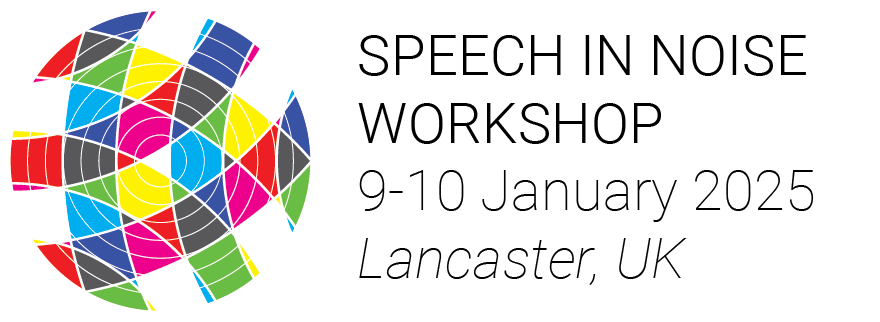P40Session 2 (Friday 10 January 2025, 09:30-11:30)Speech-in-noise performance as an unhidden aspect of ‘hidden hearing loss’
Much interest surrounds the possible contribution of synaptopathy and/or neuropathy (SNpathy) to hearing difficulties that occur despite normal audiometric thresholds. We made extensive measurements in two groups of listeners with near-normal audiograms who were expected to differ greatly in the likelihood of SNpathy: 19 Y(oung) adults aged 18-25 with limited noise exposure and 23 M(iddle-aged) adults aged 44-61 with significant noise exposure. Speech reception thresholds (SRTs) were measured binaurally in speech-spectrum-shaped noise for two tasks (recognition of complex sentences and consonant identification in VCVs). To assess the use of temporal fine structure (TFS), target and masker were presented either diotically (S0N0) or with the masker in phase at the two ears and the target out of phase (SπN0). Stimuli were presented at 40 and 80dB SPL to assess claims that deficits due to SNpathy might be more prominent at high levels.
The main findings were: 1) Performance in the Y group was always better than that in the M group, with differences ranging from 0.3 to 3.5 dB across the 8 conditions. 2) SRTs worsened across age in the M group for some conditions, meaning that the younger M listeners could be performing similarly to the Y group. 3) Greater deficits were found for SπN0 than for S0N0 conditions, implicating some deficits in the M group for processing TFS. 4) Greater deficits were found for VCVs than for complex sentences. 4) The effect of level was small. 5) Group differences in SRTs were not related to a small difference in audiometric thresholds at frequencies ≤ 4 kHz, but mean thresholds at high frequencies (8 – 16 kHz) were a good predictor for VCV SRTs in all 4 conditions.
One complicating factor in interpretation is that a technical error meant that the masker only extended to 8 kHz whereas the speech stimuli were full bandwidth, so some part of the group difference may be due to the Y group having unmasked access to speech information ≥ 8 kHz where their thresholds were considerably better than the M group. In a separate study of Y listeners, we estimated the improvement in SRTs for 80 dB SPL, in phase VCVs, to be nearly 2 dB. Hence, group differences would have been smaller if listening had been properly restricted to speech information ≤ 8 kHz. Even taking account of this complication, it seems plausible that SNpathy could be a factor in these relatively small group differences, but that these effects differ little across level.
Acknowledgements: Funded by the RNID UK.

